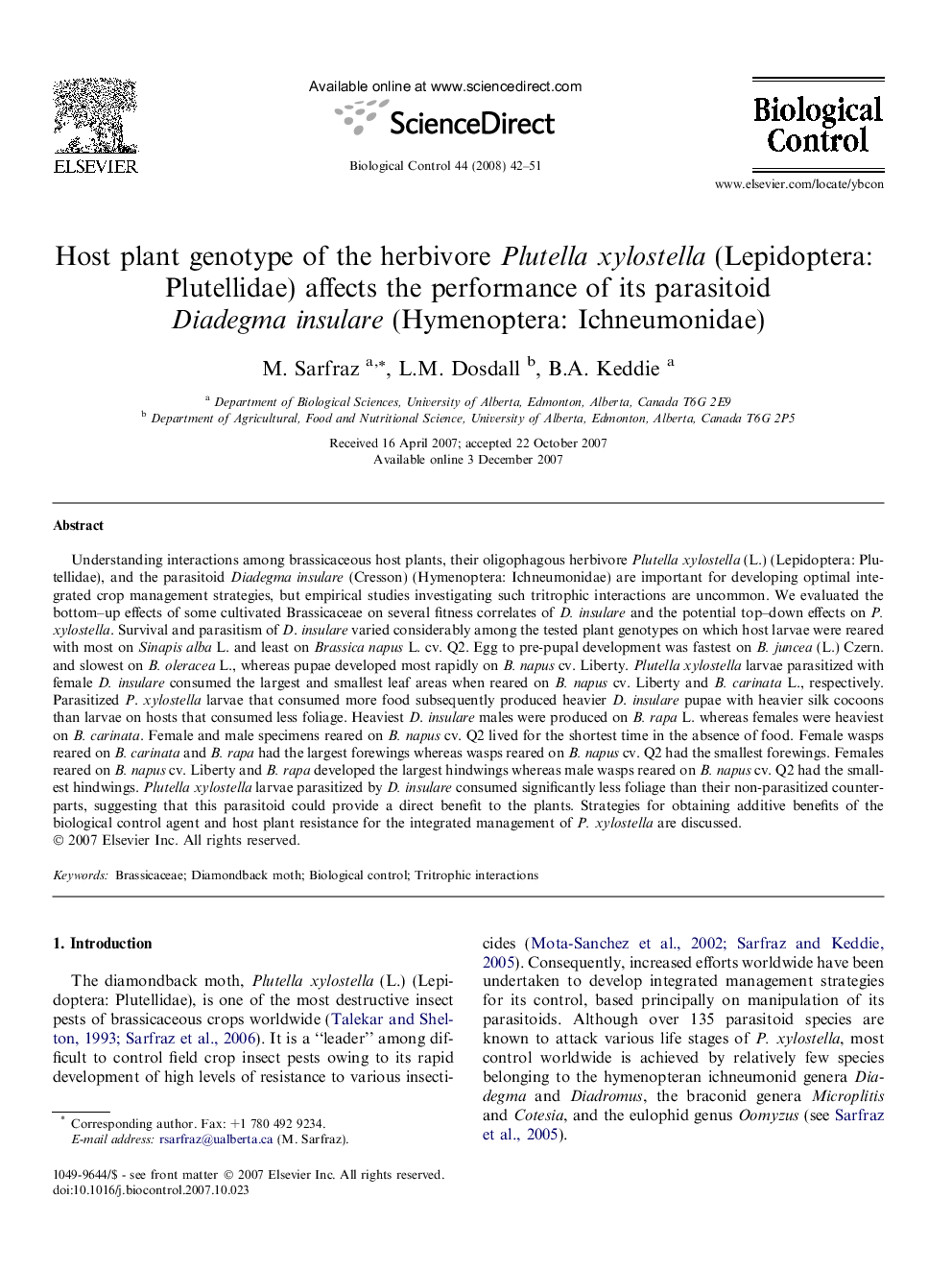| کد مقاله | کد نشریه | سال انتشار | مقاله انگلیسی | نسخه تمام متن |
|---|---|---|---|---|
| 4504878 | 1321115 | 2008 | 10 صفحه PDF | دانلود رایگان |
عنوان انگلیسی مقاله ISI
Host plant genotype of the herbivore Plutella xylostella (Lepidoptera: Plutellidae) affects the performance of its parasitoid Diadegma insulare (Hymenoptera: Ichneumonidae)
دانلود مقاله + سفارش ترجمه
دانلود مقاله ISI انگلیسی
رایگان برای ایرانیان
کلمات کلیدی
موضوعات مرتبط
علوم زیستی و بیوفناوری
علوم کشاورزی و بیولوژیک
علوم زراعت و اصلاح نباتات
پیش نمایش صفحه اول مقاله

چکیده انگلیسی
Understanding interactions among brassicaceous host plants, their oligophagous herbivore Plutella xylostella (L.) (Lepidoptera: Plutellidae), and the parasitoid Diadegma insulare (Cresson) (Hymenoptera: Ichneumonidae) are important for developing optimal integrated crop management strategies, but empirical studies investigating such tritrophic interactions are uncommon. We evaluated the bottom-up effects of some cultivated Brassicaceae on several fitness correlates of D. insulare and the potential top-down effects on P. xylostella. Survival and parasitism of D. insulare varied considerably among the tested plant genotypes on which host larvae were reared with most on Sinapis alba L. and least on Brassica napus L. cv. Q2. Egg to pre-pupal development was fastest on B. juncea (L.) Czern. and slowest on B. oleracea L., whereas pupae developed most rapidly on B. napus cv. Liberty. Plutella xylostella larvae parasitized with female D. insulare consumed the largest and smallest leaf areas when reared on B. napus cv. Liberty and B. carinata L., respectively. Parasitized P. xylostella larvae that consumed more food subsequently produced heavier D. insulare pupae with heavier silk cocoons than larvae on hosts that consumed less foliage. Heaviest D. insulare males were produced on B. rapa L. whereas females were heaviest on B. carinata. Female and male specimens reared on B. napus cv. Q2 lived for the shortest time in the absence of food. Female wasps reared on B. carinata and B. rapa had the largest forewings whereas wasps reared on B. napus cv. Q2 had the smallest forewings. Females reared on B. napus cv. Liberty and B. rapa developed the largest hindwings whereas male wasps reared on B. napus cv. Q2 had the smallest hindwings. Plutella xylostella larvae parasitized by D. insulare consumed significantly less foliage than their non-parasitized counterparts, suggesting that this parasitoid could provide a direct benefit to the plants. Strategies for obtaining additive benefits of the biological control agent and host plant resistance for the integrated management of P. xylostella are discussed.
ناشر
Database: Elsevier - ScienceDirect (ساینس دایرکت)
Journal: Biological Control - Volume 44, Issue 1, January 2008, Pages 42-51
Journal: Biological Control - Volume 44, Issue 1, January 2008, Pages 42-51
نویسندگان
M. Sarfraz, L.M. Dosdall, B.A. Keddie,